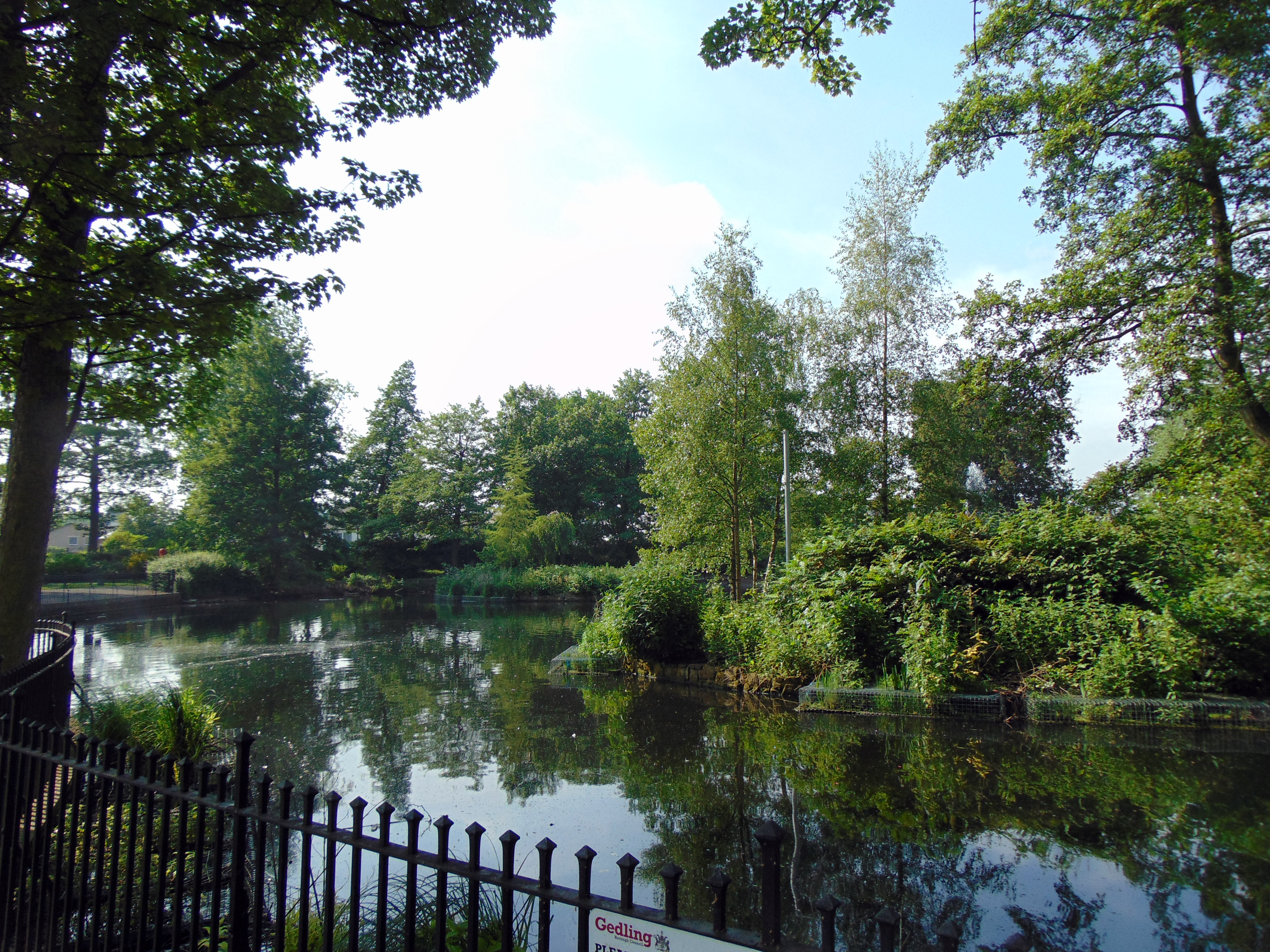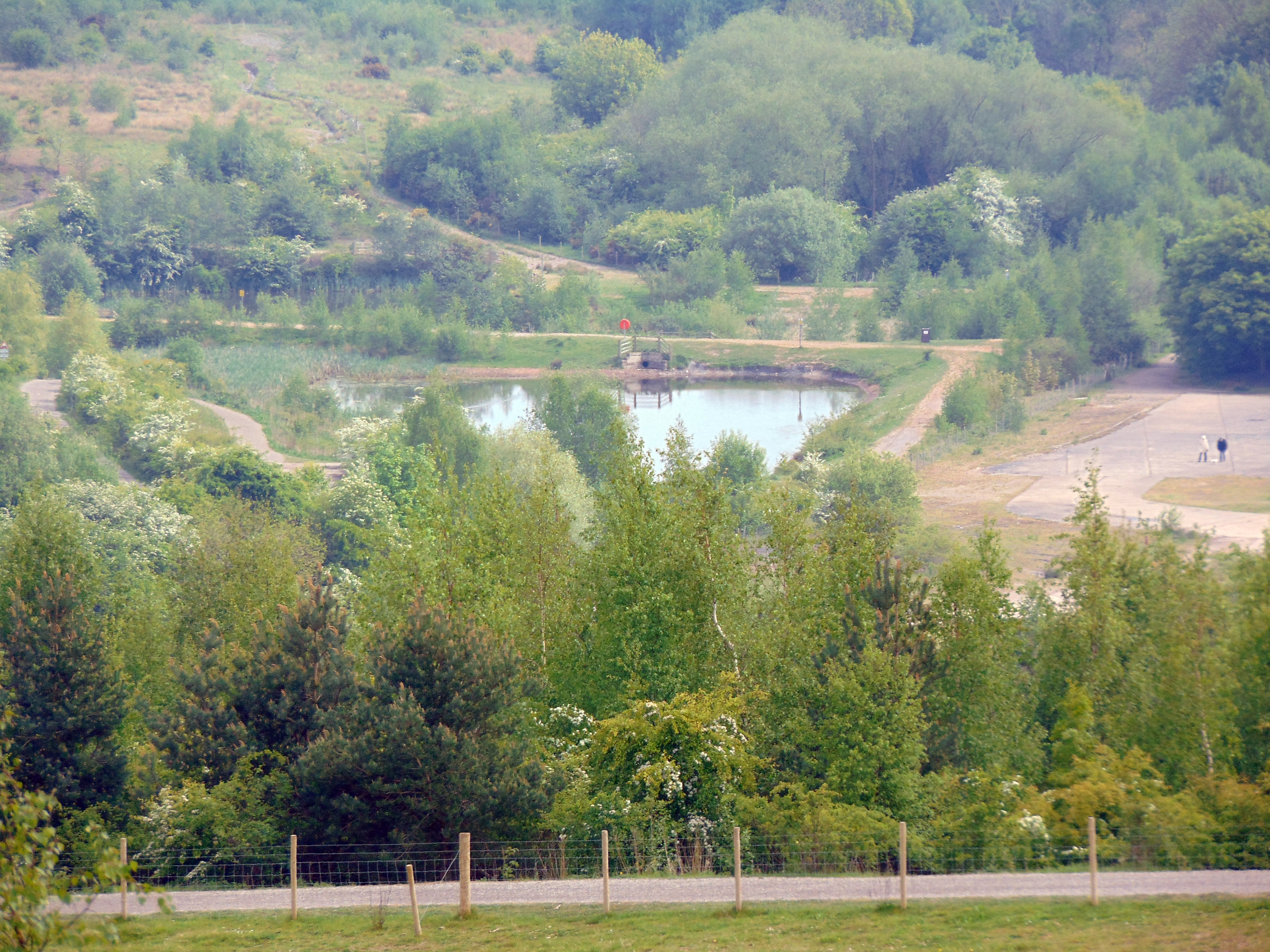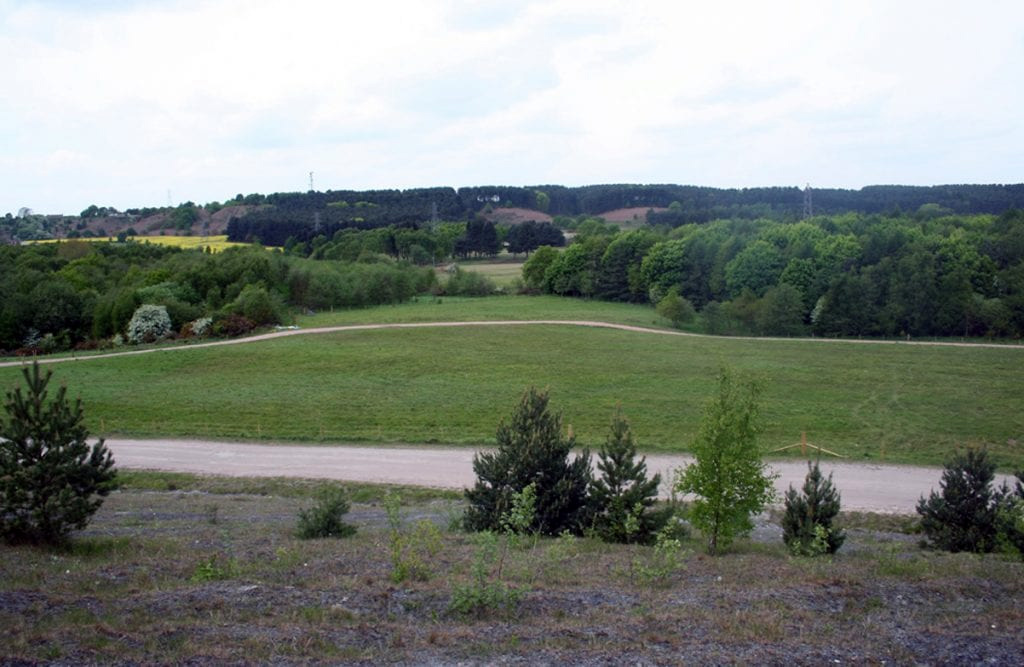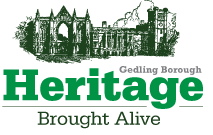Parks & Nature Reserves
The Royal Forest of Sherwood was created by the Norman kings to provide an area for hunting. It extends northwards and included most of the borough of Gedling. In the Middle Ages, the legend of Robin Hood and his Gang grew up and several places in the borough have links to the legend. Across the borough, what remains of the ancient Sherwood Forest still makes up the countryside, used for leisure and nature conservation. In other areas there is an abundance of urban parks, nature reserves and woodland where countryside access can be enjoyed.
Arnot Hill Park, Arnold
This park was originally the grounds of the mansion home of an 18th century industrialist, John Hawksley. The ornamental lake in the park is the remnants of the pond which provided water for a worsted mill. Although the mill closed in 1810, the Hawksley family continued to live there. The park, maintained by Gedling Borough Council, is laid out with paths and now houses the Lake View Café, a bowling green and a children’s play area. www.gedling.gov.uk/arnot-hill-park/

Bestwood Country Park
Bestwood Country Park, once part of the 3,700 acre (1500ha) Royal Deer Park of Bestwood, is accessed on its north side via Bestwood Village and on its south side via Bestwood Lodge Drive in Arnold. There are also several points for entering the park on foot. Almost 700 acres (282ha) of woodland, meadows, reclaimed colliery ground, a river and lakes are all well managed. The meadows are managed by means of sheep and cattle grazing, to preserve the native flora. Various wildlife species make their homes in the park, including hares, rabbits, foxes and fallow deer; 130 species of birds have also been recorded. The Friends of Bestwood Country Park have developed a rolling programme of studying and recording the plants and wildlife there. On the colliery site is the unique Bestwood Colliery Winding Engine House, its vertical steam winder and headstocks still in working order. Restored and Grade II-listed, it is cared for by a group of ex-miners, who on Saturdays offer free guided tours of the building and machinery. www.fbcp.org.uk/maps.html

Photo by Clem Rutter
Burnt Stump Country Park
The 37 acres (15ha) of parkland is what remains of the estate formerly surrounding the large house built in 1790 by Henry Coape, later occupied by Sir Charles Seely a local mine-owner and MP. The house was subsequently demolished, and the site now includes the headquarters of Nottinghamshire Police. The playing fields and woodland walks, close to the A60 and maintained by Gedling Borough Council, are accessible to the public all year round. www.nottsguidedwalks.co.uk/Selfguided/BurntstumpCountryPark.pdf
Fox Covert Plantation
Fox Covert Plantation near Calverton is a mixed deciduous woodland managed by Nottinghamshire Wildlife Trust. The main wood covers more than seventeen acres (7ha), with oak and birch the principal species, as well as several others, including sycamore, sweet chestnut, rowan and coppiced lime. The wood is linked by a grassy ride to two open areas of sycamore and acid grassland, with over thirty common species of ground flora. In winter, goldcrest, redpoll and long-tailed tit can be seen, with occasional sightings of woodpecker. www.nottinghamshirewildlife.org/nature-reserves/foxcovert-plantation
Gedling Country Park
Gedling Country Park covers 580 acres (235ha) of open space, created since 2000 through reclamation of the spoil heap from Gedling Colliery. With outstanding views over the surrounding area, the park has a visitors’ centre and café, as well as marked trails, footpaths and wildlife habitat. Opened in 2015, the park is managed by Gedling Borough Council with the assistance of the Friends of Gedling Country Park. There is a café, as well as marked trails, footpaths and wildlife habitats. www.gedlingcountrypark.org.uk www.gedling.gov.uk/gedlingcountrypark/

Linby Trail & Freckland Wood
The Linby Trail is a linear nature reserve along the line of the former Great Northern Railway. It links Linby village to Freckland Wood at Newstead (a landscaped colliery tip), a multi-user trail providing access to horse-riders, cyclists and walkers. The railway cuttings were excavated through the Magnesian limestone; the trail is an important geological reserve showing the strata and is also home to limestone flora and fauna. Freckland Wood provides an excellent viewpoint over the surrounding countryside.
Moor Pond Woods
The 17 acres (7ha) of woodland are a publicly accessible space between Linby and Papplewick, with paths laid out by Papplewick Parish Council as its Millennium project. The site was used in the 18th century to store and transport water to cotton mills and the preserved remains of stone sluices are visible there. The site, which includes woodland, wetland and meadows providing important habitats for a variety of animals and plants, is maintained by a partnership between Nottinghamshire County Council and the Friends of Moor Pond Woods. http://moorpond.papplewick.org
Netherfield Lagoons
Netherfield Lagoons Local Nature Reserve is situated on the flood plain of the river Trent. Part of the site was used as a dump for coal slurry, but there are two remaining gravel ponds. A causeway, raised around fifteen metres (50 feet) above the pits, gives a commanding view of the three main compartments; the Slurry Lagoon, the Deep Pit and the Gravel Pits. The larger tank, virtually full but still able to retain some water, provides muddy edges attractive to waders, roosting gulls and terns. The smaller tank is mainly of deep water, attracting large numbers of wildfowl, with smaller birds, especially warblers, feeding and breeding around the edges. The reserve is managed by Gedling Conservation Trust. www.gedlingconservationtrust.org
Newstead and Annesley Country Park
Newstead and Annesley Country Park is a beautiful, eco-friendly park, is five minutes’ walk from Newstead railway station and less than ten minutes’ drive from Junction 27 of the M1. The park, covering an area of 220 acres (89ha), is situated on the site of former colliery spoil tips and lagoons. The whole area is of significant interest for its wildlife, a number of volunteers working on the site to protect and enhance this. www.ruralcommunityactionnottinghamshire/newsteadannesley-country-park

Stoke Lock Woods
Stoke Lock and Woods on the River Trent near Stoke Bardolph provide an area of peace and tranquillity. The mature woodland around Stoke Lock was planted just after the lock was built in 1927, creating an excellent site for walkers and nature lovers. There are on-site interpretation panels and listening posts. The borough has a host of other interesting parks and nature reserves, some of which are highlighted on the Places to Visit page, but here is a list:
- Burton Road Jubilee Park gedling.gov.uk/resident/parksandgreenspaces/friendsofgedlingparks/
- Calverton Colliery Nature Reserve
- Calverton Colliery – Calverton Railway line to Bestwood https://vimeo.com/38923030
- Calverton Road Nature Reserve http://data.wildlifetrusts.org/reserves/calverton-road
- Conway Park – http://friendsofconwayrec.co.uk/history/
- Faith Marriot Nature Reserve nottinghamshirewildlife.org/nature-reserves/faith-marriott
- Gedling House Woods http://www.fghw.org.uk/about-gedling-house-woods-and-meadows/history-of-gedling-house-woods-and-meadows/
- Hobbucks Nature Reserve thebigwheel.org.uk/hwh/walks/kilisick-hobbucks-walk-b/
- Lambley Dumbles http://www.nottsguidedwalks.co.uk/Selfguided/LambleyHighPastures.pdf
- Longdale Lane/Thieves Woods UK Wanderings: Fountain Dale and Blidworth
- Reed Pond Nature Reserve https://www.nottinghamshirewildlife.org/nature-reserves/reed-pond
- Sansom Woods https://getoutside.ordnancesurvey.co.uk/local/sansom-wood-gedling
Watchwood Plantation
